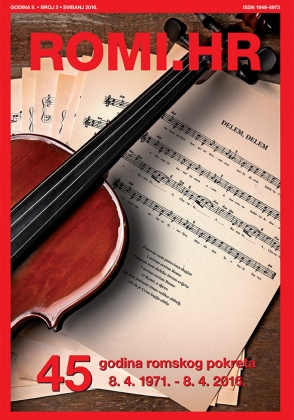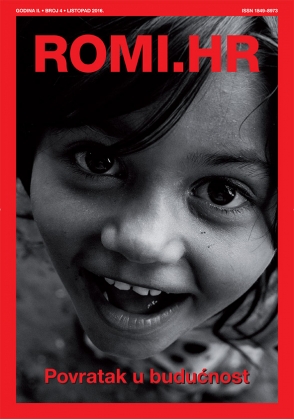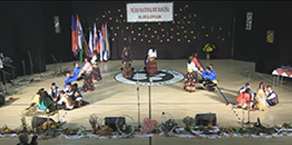Features ROMI.HR
/The culture of Roma people can look very different depending on the country. But in what country could the Roma population even be described as more faithful to the country's traditional culture than the majority population?
The first Roma people came to Finland in the sixteenth century, both from Sweden, the Baltic countries and Russia. Back then, Finland was a part of the kingdom of Sweden, as it would be until 1809. Most of the Roma people living in Finland are Kale-Roma, often called Finnish Roma. In Finland, there are approximately 10,000 Finnish Roma and about 3000 in Sweden. The Finnish Roma have a strong cultural identity, formed over the last 500 years.
Roma people in Finland have, for a long time through history, been largely integrated with the majority population. Many Roma people had skills that were useful for the farmers, for example taking care of, and castrating horses. Roma people were also known for being skilful gunsmiths. Because of their knowledge of horses and weaponry, the Finnish Roma were coveted within the military. Around one thousand Finnish Roma were drafted and fought in the many wars Finland went through in the first half of the 20th century. This created a sense of belonging and made many Roma people feel a strong connection to Finland and their Finnish identity.
The integrated relationship between the Roma people and the majority population did not last forever. By the end of the 19th century, the Finnish press started to express negative views on Roma people. This development could be connected to the racial biological theories that were flourishing in Europe at this time. However, many scholars claim that the opinions of the press did not affect the generally positive, or at least neutral, view the Finns had of Finnish Roma.
After the Finnish Continuation war against the Soviet Union between 1941-44, Finland lost parts of the region of Karelia to the Soviet Union. As a big part of the Finnish Roma lived in the region of Karelia, they, and many other inhabitants of Karelia, had to move to more western parts of the country. Because of this, many Roma people became isolated from the majority. When Finnish authorities failed to provide them with new places to live, the Finnish Roma became largely marginalized both economically and socially.
Finnish Roma women still wear the traditional Finnish Kale dress, which is derived from traditional Finnish attire from Karelia. It’s about one hundred years old and has its roots in the clothing that women in the countryside used to wear. While the majority population of Finland left this type of fashion behind them, Finnish Roma have embraced and developed it further.
The dress includes a long, black velvet skirt which can weigh up to twelve kilos. Since you need about nine meters of velvet to make the skirt, the price for it can sometimes be up to 900 euros. The clothes are often seen as a sign of womanhood, and girls do not wear them until they are considered mature enough.
Many Finnish Roma point out the difficulties of wearing the traditional skirt. When out in public, one will much more easily be recognized as Roma, which can lead to being met with suspicion and discriminatory behaviour. Many Finnish Roma women have testified that they are often followed around stores by store managers and security guards while shopping. Finnish Roma women, and Finnish Roma overall, also often face difficulties in the job market. A study from 2012 showed that about half of all employers in Finland preferred not to hire a Roma person. Because of a lack of education, it is also estimated that half of the Finnish Roma in Finland are unemployed.
Many Finnish Roma are part of the Evangelical Lutheran Church of Finland, which is one of the national churches of Finland. There is also a mentionable amount of Finnish Roma who have joined the Pentecostalist movement. David Thurfjell, a professor in religion, has studied the connection between Finnish Roma and Pentecostalism.
Thurfjell argues that Finnish Roma are put in a difficult situation as they are receiving pressure to adjust to the norms of the majority population but at the same time being expected to preserve their own Roma culture. According to Thurfjell, pentecostalism offers a free space for Finnish Roma, as they are given space to preserve their traditions and customs, but at the same time have the opportunity to receive concrete support for solving social issues.
The cultural identity of Finnish Roma is a two-sided one. Because of having lived side by side with the Finnish majority population for half a millennium, their traditions and culture are tied together with the Finns to a large extent. At the same time, Finnish Roma have been subject to discrimination, and still are today. Through all the hardships they have met, Finnish Roma have always been known for their pride. Both the one they have over their Finnish identity, and their Roma identity.
 Back to Features
Back to Features













